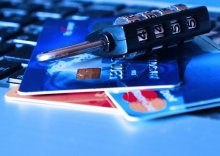
Identity Theft: Self-Help Tools

What is Identity Theft?
Identity Theft is the most common consumer complaint filed with the Federal Trade Commission (FTC) annually. So, if this has happened to you, you are not alone. Common forms of identity theft include when someone has used your name to:
- make purchases,
- get credit cards,
- rent an apartment, or
- obtain utilities without your permission.
In some cases, thieves may have received medical services in your name, re-routed your tax refund, or even impersonated you during contact with law enforcement.
Identity theft may also include someone using checks on your account. This could be from stealing your checkbook or electronically obtaining access to your checking account. Use of an ATM card or credit card that you did not approve is also identity theft.
In some cases, identity theft occurs within families to children, seniors, and domestic violence survivors, making reporting and recovery especially difficult.
How does an Identity Theft impact me?
Even if you are able to resolve a financial identity theft issue with your bank, this use of your name and credit history can result in you getting collection letters for things you did not purchase.
It can also result in unfavorable entries on your credit report, causing you problems in getting credit or paying a higher interest rate.
Becoming the victim of an identity theft can become complicated and frustrating.
What can I do?
The Federal Trade Commission has created sample letters in this .pdf booklet that you can use to notify a debt collector or credit bureau of the theft of your identity.
 To use the letters, you must first report the crime of identity theft to the police. You do not need to know the name of the person who used your identity. You show the police the debt collection letters or other confirmation that you are the victim of this crime.
To use the letters, you must first report the crime of identity theft to the police. You do not need to know the name of the person who used your identity. You show the police the debt collection letters or other confirmation that you are the victim of this crime.
The three automated form letters below were created from these FTC-created model forms. If you feel comfortable using a computer, using this online software may be the easiest way for you to draft the letters you need.
Before You Begin Using the Automated Forms:
The Automated Forms links below will take you to another website: LawHelp Interactive. The site is the collaborative effort of a national group of legal aid programs. It is safe and secure.
The site provides legal information, not legal advice. These forms are not for commercial use and charging for use in any way is prohibited.
This material was produced in part by the Maryland Crime Victims' Resource Center, Inc. under award #2010-VF-GX-K030, awarded by the Office for Victims of Crime, Office of Justice Programs, U.S. Department of Justice.
Neither the U.S. Department of Justice nor any of its components operate, control, are responsible for, or necessarily endorse, these materials including, without limitation, its content, technical infrastructure, and policies, and any services or tools provided.
Automated Forms
1. Letter to Creditor
This is a letter that tells a creditor that you did not authorize an expense you have been charged with. This might be a credit card statement you received that contains charges you didn’t make or authorize. It can be any situation where your credit or identity was used without your permission. It is intended for a creditor that is directly collecting its own bill, not a collection agency.
NOTE: You will need a copy of the bill in hand when you start the interview. You will also need to provide a copy of your proof of your identity.
Go to: Letter to Creditor – Identity Theft
2. Letter to Debt Collector
This is a letter to send to a third-party debt collector who is trying to collect a debt that you did not authorize.
NOTE: You will need a copy of their letter in hand when you start the interview. You will also need to provide a copy of your police report and proof of your identity, by copying these and putting them with the letter.
Go to: Letter to Debt Collector – Identity Theft
3. Letter to Credit Bureau
You can obtain a free copy of your credit report from each of the 3 credit bureaus. You do not have to pay for a copy of your credit report. One credit report from each company is available to you free each year.
This letter to the credit bureaus requests investigation and removal from your credit report of items that are the result of identity theft.
NOTE: You will need a copy of your credit report in hand when you start the interview.
After you have created your letter, mail the letter to the credit bureau, attaching:
- a copy of your credit report with the incorrect items circled,
- a copy of the police report you made of the identity theft, and
- proof of your identity
Go to: Letter to Credit Bureau – Identity Theft
Learn more:
Federal Trade Commission: Identity Theft
Taking Charge: What to do if your identity is stolen (.pdf file from the FDC)
Last updated May 2018
